“Whenever I play a three-single-coil normal Strat, I just never felt like I fully sound like myself. The Strat always has such a voice”: Ariel Posen is a Stratocaster lifer – but his signature guitar wants to be a Jazzmaster
Ariel Posen's signature Strat is one of the coolest and most original we have seen in years and presents players with some of the sound of the classic '60s Jazzmaster and none of the switches
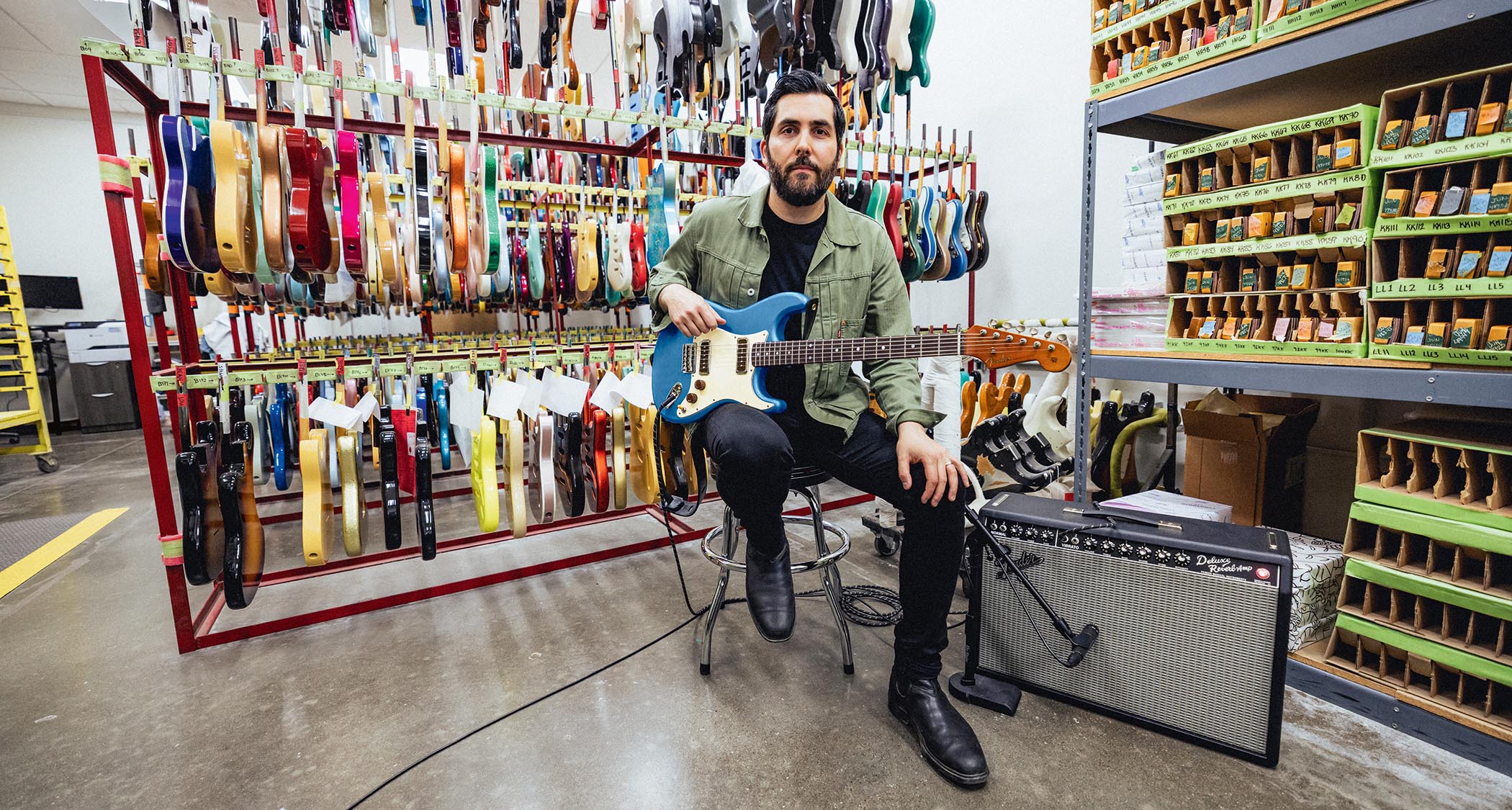
Most of us have modded guitars at some point, but only a select few have had their own signature guitar factory-built for them with mods included from the word go. Canadian guitarist Ariel Posen, who has garnered a worldwide following for his lyrical, expressive playing style, has now joined that exclusive club.
Recently honoured with his own Fender Custom Shop signature model – the Limited Edition Ariel Posen Stratocaster – the story of its creation is a model of how, when offered the chance to have anything you want, understanding what you need and keeping things simple can yield the best results.
Tell us about your new signature model – it’s a blend of quite a few things.
“Well, it’s a Stratocaster, but it’s based off of two Fenders of mine that I own. One is my ’68 Custom Shop [Strat], which I’ve had for 15 years. And I really wanted to make sure [this new guitar also possessed] that guitar’s neck profile.
“I’ve always loved that neck profile, which is a ’69 ‘U’ back shape. When I had my Jazzmaster built about six years ago, I specifically sent them the serial number of that Strat so they could match its neck shape.
“I ended up loving so many things about that Jazzmaster because, of course, it’s Fender-y, but it always felt more open-sounding than a Strat. And whenever I play a three-single-coil normal Strat, I just never felt like I fully sound like myself.
“If you put it on the fourth or second position [on the pickup selector] you immediately just want to play like a great blues player – but I’m not a blues guitarist. The Strat always has such a voice.”
All the latest guitar news, interviews, lessons, reviews, deals and more, direct to your inbox!
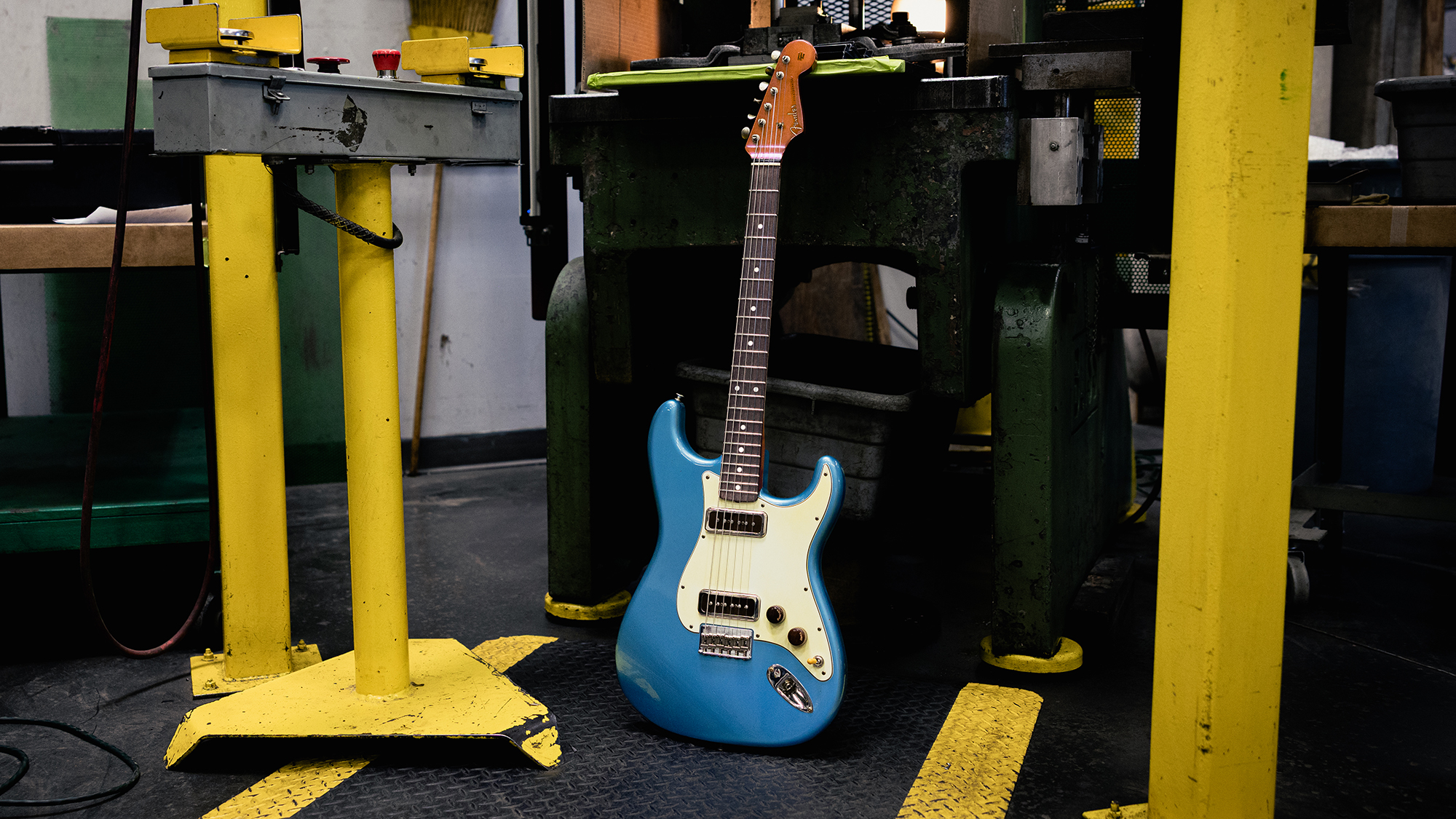
“So I wanted to combine those two guitars. And I’ve always been truly a Strat guy; I never identified as an offset guy. So when this opportunity came up and they asked me, ‘What do you want?’, first of all, it took a good minute to think about it, but I really just wanted to combine those two guitars.
Whenever I play a three-single-coil normal Strat, I just never felt like I fully sound like myself
“I wanted to combine the feel and the shape and the majority of the elements of what you get from a Strat. But on the electronic side, I wanted to lean more into the Jazzmaster, and I wanted to lean into all these other Strats that I was experimenting with. Which is an important part of discussion – because I had a couple of Strats that I’d set up similar to how I have my Mule where I have a volume, tone and then the pickup switch where the second tone control would be.
“And I was using ‘cupcake’ knobs, like the Harmony ones, because they have such a good grip and I use the volume so much. Cosmetically, it looks cool, too. But it was primarily about function.”
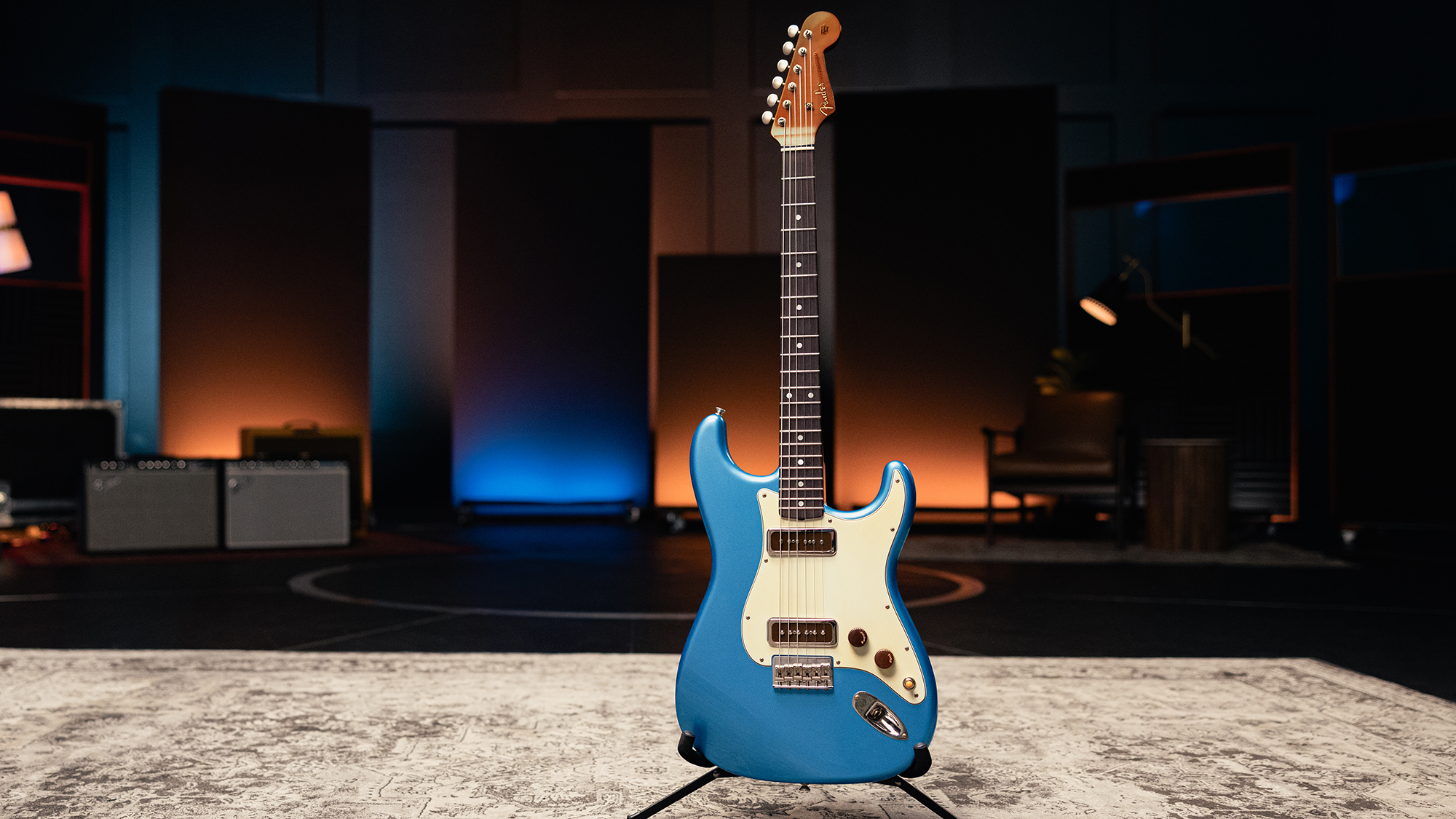
The basic ‘chassis’ of the guitar is that of a Strat, but clearly the pickups are rather different from usual.
“I did most of the experimenting with the pickups [during this guitar’s design process]. I considered Gold Foils and stuff like that, but I didn’t want to do a ‘Coodercaster’ thing – I really wanted to do my own thing. In the discussions with Tim Shaw, he was like, ‘How do you want this to sound?’
“So I said, ‘Well, I know for a fact that I just love the sound of the Jazzmaster neck pickup. Can I give you the serial number of that and can we just rewire that as close as possible to the spec of that [pickup from my earlier Jazzmaster]?’ He’s like, ‘Great, no problem.’”
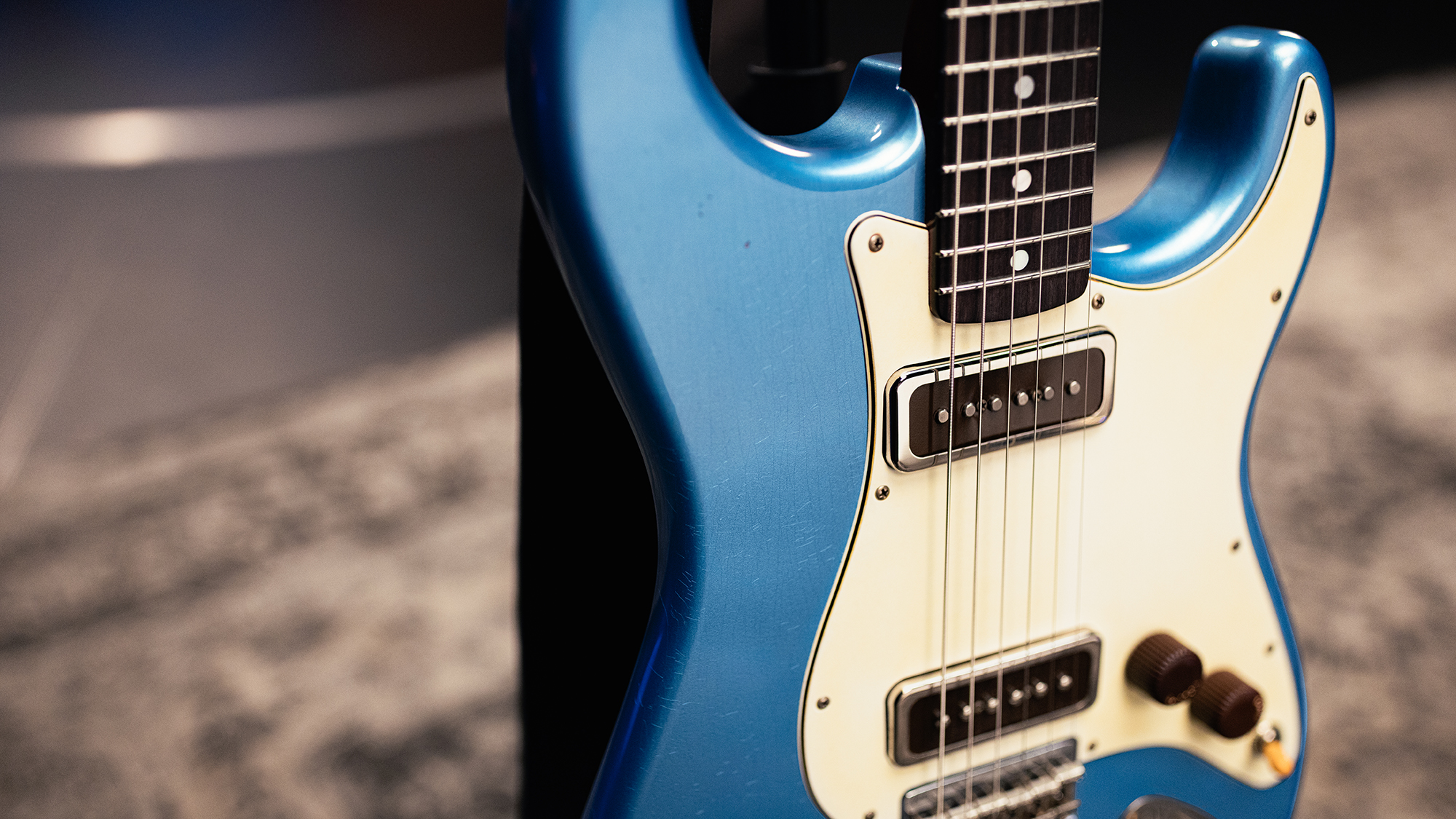
“But I didn’t want to do a Jazzmaster bridge pickup because it’s always a little too thin, in my opinion. And obviously a Strat bridge pickup is also very thin. But I didn’t want to do a humbucker or a mini-humbucker and I didn’t want to do a Gold Foil, either.
“So he was like, ‘How about a P-90?’ Traditionally, I haven’t loved P-90s, but I think it’s primarily because I’ve played them in guitars like Les Paul Specials and stuff that’s very dark and has a specific sound that was never quite my thing. So I said, ‘Let’s try it.’”
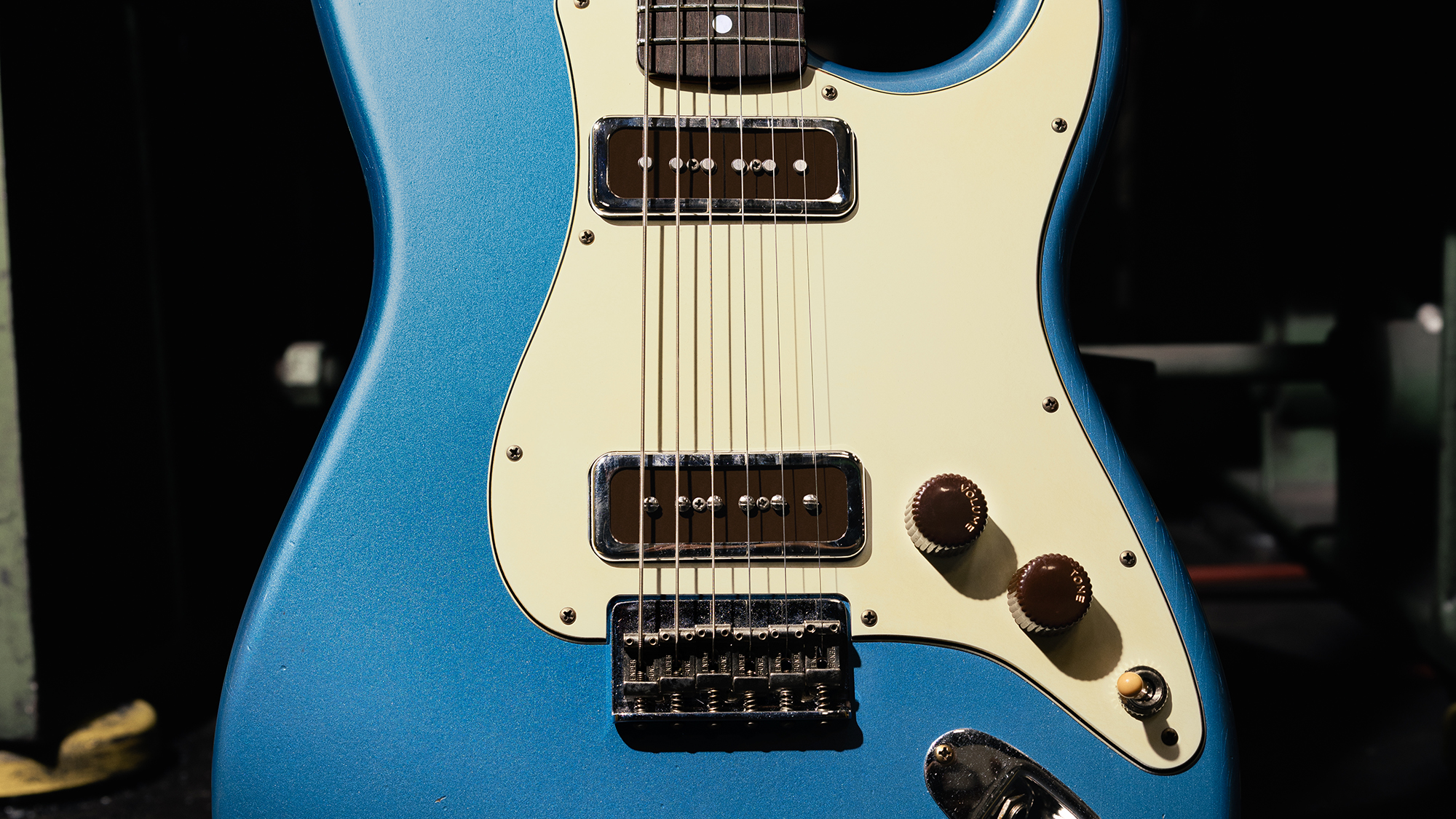
“The first set that he sent, with the prototype P-90 in the bridge and the Jazzmaster in the neck, he’d nailed it. It was perfect – it was the sound. It still sounded like a Fender, but it sounded more like me, and it sounded just… elevated. It was still low output [for this pickup configuration], but it was more output than I needed from a normal Jazzmaster or Strat, if that makes sense, totally and together.
“I mean, I’m biased, but I think they sound really great together. It’s a very simple setup and a very simple guitar, but it still has a lot of versatility to the sound, and you can get a lot out of it.”
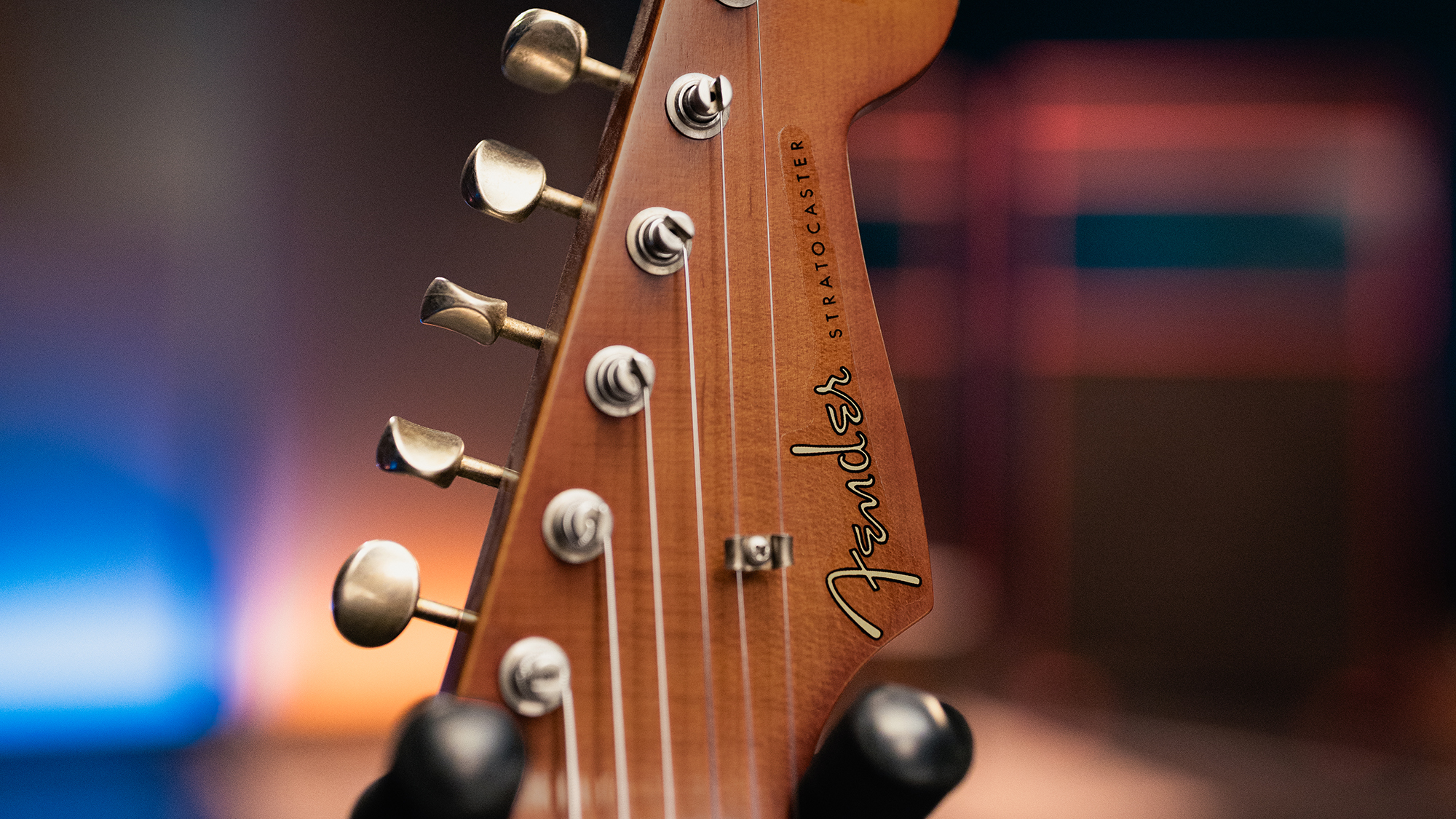
“I’m a very ‘set it and forget it’ kind of guy. It’s a tool to me, you know? It’d be great if someone thinks it’s cool and wants to use it for themselves, but, primarily, the point of doing a signature instrument is that it’s for you.
“I wanted this to be a reliable tool and I love simple; I don’t want five switches, I don’t want a DIP switch here or a DIP switch there. It’s too ‘micro’ in the moment. I tend to not even use that kind of stuff. So bridge, middle, neck, no nonsense, no treble bleed, just one tone, one volume. That’s what works best for me. I just love that.”
- Find out more at the Fender Custom Shop
- This article first appeared in Guitarist. Subscribe and save.
Jamie Dickson is Editor-in-Chief of Guitarist magazine, Britain's best-selling and longest-running monthly for guitar players. He started his career at the Daily Telegraph in London, where his first assignment was interviewing blue-eyed soul legend Robert Palmer, going on to become a full-time author on music, writing for benchmark references such as 1001 Albums You Must Hear Before You Die and Dorling Kindersley's How To Play Guitar Step By Step. He joined Guitarist in 2011 and since then it has been his privilege to interview everyone from B.B. King to St. Vincent for Guitarist's readers, while sharing insights into scores of historic guitars, from Rory Gallagher's '61 Strat to the first Martin D-28 ever made.
You must confirm your public display name before commenting
Please logout and then login again, you will then be prompted to enter your display name.

